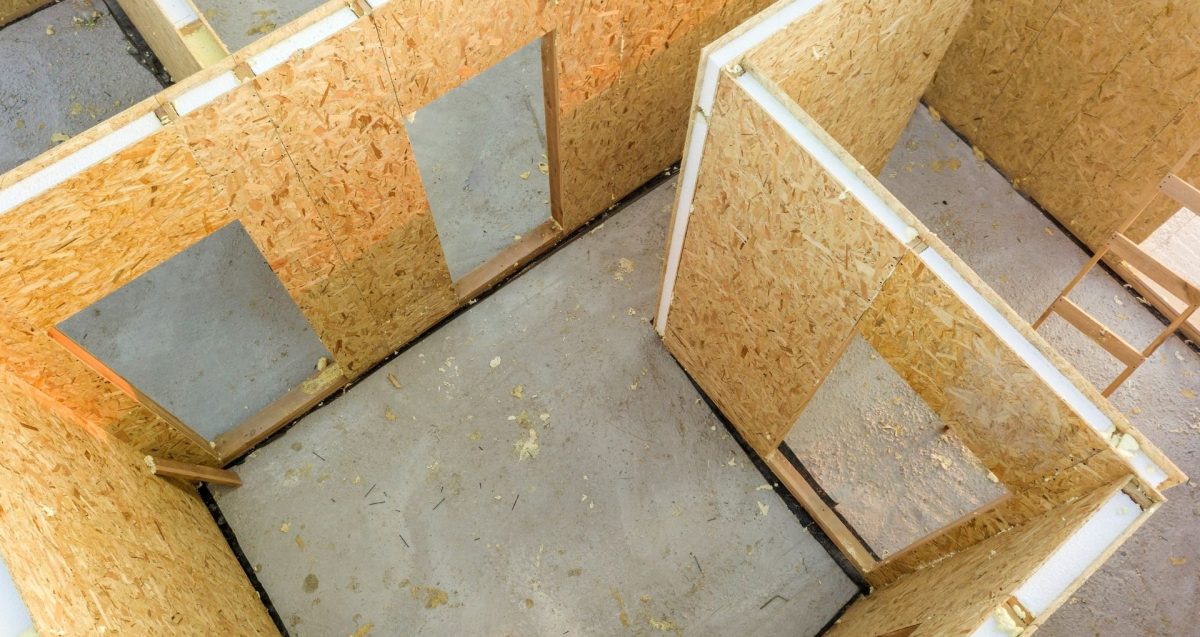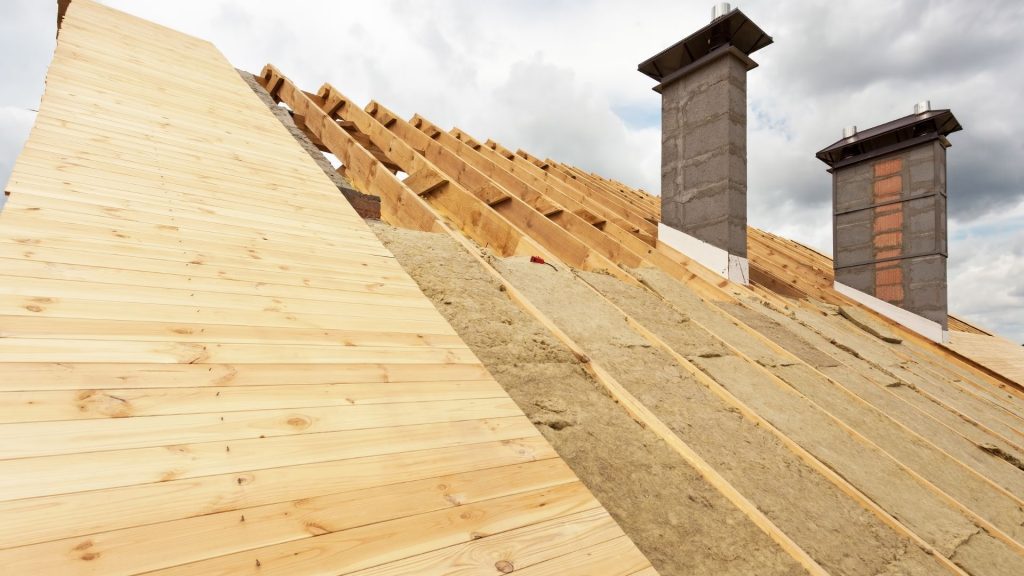Vacuum Insulated Panels (VIPs) are advanced insulation materials designed to provide exceptional thermal insulation in a compact form. They consist of a core material enclosed within a gas-tight barrier, from which air is removed to create a vacuum environment.
The core material of VIPs is typically composed of a highly porous material, such as fumed silica, glass fiber, or other microporous materials. This core material is enclosed within a gas barrier made of aluminum, metallized film, or other impermeable materials. The edges of the panel are sealed to maintain the vacuum integrity.
The vacuum inside the panel significantly reduces heat transfer by minimizing conduction and convection. This results in a highly efficient insulation material with extremely low thermal conductivity. The thermal conductivity of VIPs is typically around 0.004 to 0.007 W/(m·K), which is significantly lower than conventional insulation materials.
VIPs are commonly used in various applications where high thermal performance is crucial, and space constraints are a concern. They are used in building construction for walls, roofs, floors, and other areas that require excellent insulation in limited space. VIPs are also used in appliances, refrigeration units, transportation vehicles, and other industries where insulation is essential for energy efficiency and temperature control.
While VIPs offer exceptional insulation performance, they do have some limitations. VIPs are sensitive to physical damage, as puncturing the barrier can compromise the vacuum and reduce the insulation effectiveness. They are also relatively expensive compared to traditional insulation materials. Proper handling, installation, and protection are essential to maintain the integrity and performance of vacuum insulated panels.
Table of Contents
ToggleWhat does vacuum insulated mean?
“Vacuum insulated” refers to a state or condition where an enclosed space or material is devoid of air or other gases. In the context of insulation, it refers to the use of a vacuum environment to minimize heat transfer.
When a material or space is vacuum insulated, it means that the air or gas within it has been removed, creating a vacuum. This absence of air eliminates the transfer of heat through conduction and convection, as these processes rely on the presence of gas molecules to transfer thermal energy.
Vacuum insulation is highly effective because it greatly reduces heat transfer, providing excellent thermal resistance. It is commonly used in insulation applications where maximizing thermal performance is crucial, especially when there are space limitations. Vacuum insulation allows for a significant reduction in the thickness of insulation materials while maintaining high levels of thermal resistance.
Vacuum insulation is employed in various products and systems, including vacuum insulated panels (VIPs), thermos flasks, cryogenic storage containers, and certain types of building insulation. By creating a vacuum, these systems minimize heat transfer, improving energy efficiency and maintaining temperature control.

How long do vacuum insulated panels last?
The lifespan of vacuum insulated panels (VIPs) can vary depending on various factors, including the quality of the panel construction, the materials used, the environmental conditions, and the specific application. In general, VIPs are designed to have a long service life, but it is difficult to provide an exact duration as it can range from several decades to over 50 years.
Proper handling, installation, and maintenance play a crucial role in maximizing the lifespan of VIPs. It is important to ensure that the panels are not punctured or damaged during handling or installation, as any breach in the vacuum barrier can significantly reduce their insulation performance.
Environmental conditions can also affect the longevity of VIPs. Exposure to extreme temperatures, moisture, or prolonged UV radiation may degrade the materials or compromise the vacuum integrity over time. Therefore, protecting VIPs from such conditions and following manufacturer recommendations for installation and maintenance are essential.
It is advisable to consult with the manufacturer or supplier of the specific VIP product to obtain information regarding their expected lifespan and any specific maintenance requirements. They can provide guidance based on their product’s design and materials.
Regular inspection of VIPs is recommended to identify any signs of damage or degradation. If any issues are detected, it is advisable to consult with professionals experienced in VIPs or contact the manufacturer for guidance on repair or replacement.
Overall, while VIPs are designed for long-term performance, ensuring proper installation, protection, and maintenance will help maximize their lifespan and ensure optimal insulation efficiency over time.
Where is vacuum insulation used?
Vacuum insulation is used in various applications where high thermal performance and space efficiency are important. Some common areas where vacuum insulation is employed include:
Building Construction: Vacuum insulated panels (VIPs) are utilized in walls, roofs, floors, and other areas of buildings to provide excellent thermal insulation while minimizing the thickness of the insulation layer. VIPs are particularly useful in applications where space is limited, such as in retrofit projects or buildings with stringent energy efficiency requirements.
Appliances and Refrigeration: Vacuum insulation is used in appliances like refrigerators, freezers, and coolers to minimize heat transfer and improve energy efficiency. By reducing the insulation thickness, appliances can have more interior space while maintaining effective insulation properties.
Transportation: Vacuum insulation is employed in transportation applications such as refrigerated trucks, shipping containers, and aerospace systems. It helps maintain temperature control and energy efficiency, ensuring the integrity of temperature-sensitive goods and reducing energy consumption during transport.
Cryogenic Storage: Vacuum insulation is utilized in cryogenic storage containers and tanks for the storage of liquefied gases, such as liquid nitrogen or liquid helium. The vacuum insulation minimizes heat transfer into or out of the storage vessel, maintaining the desired low temperature of the stored substances.
Thermal Flasks and Containers: Vacuum insulation is commonly found in thermal flasks and containers used for keeping beverages or food hot or cold. The vacuum barrier minimizes heat transfer, allowing contents to retain their desired temperature for extended periods.
The use of vacuum insulation continues to expand into other areas where thermal performance and space efficiency are critical. Advances in vacuum insulation technology may lead to further applications in diverse fields such as renewable energy, electronics, and industrial processes.
Is vacuum insulation better than foam?
Whether vacuum insulation is better than foam insulation depends on the specific application and the desired outcome. Both vacuum insulation and foam insulation have their advantages and considerations:
Thermal Performance: Vacuum insulation typically offers superior thermal performance compared to foam insulation. The absence of air or gases in the vacuum environment minimizes heat transfer through conduction and convection, resulting in very low thermal conductivity. Foam insulation, on the other hand, provides good thermal resistance but generally has higher thermal conductivity compared to vacuum insulation.
Thickness and Space Efficiency: Vacuum insulation provides high thermal resistance in a thinner profile compared to foam insulation. This space efficiency can be particularly advantageous in applications where space constraints are a concern. Foam insulation, however, is more flexible and can be easily shaped and fitted into irregular spaces.
Durability and Longevity: Foam insulation, when properly installed and maintained, can have a long service life. Vacuum insulation, while designed for long-term performance, may be more susceptible to damage or compromised vacuum integrity, which can affect its effectiveness over time.
Cost: Foam insulation materials are generally more cost-effective compared to vacuum insulation, which often requires more complex manufacturing processes and specialized materials. The cost of vacuum insulation may limit its feasibility for some applications.
Installation and Handling: Foam insulation is easier to handle and install compared to vacuum insulation, which requires careful handling to prevent damage to the vacuum barrier. Foam insulation can be easily cut, shaped, and installed on-site, while vacuum insulation panels are typically pre-made and require precise installation techniques.
It’s important to evaluate the specific requirements of the application, including factors such as space availability, desired thermal performance, cost considerations, and long-term durability. Consulting with professionals experienced in insulation technologies can help determine the most suitable choice for a given project.



